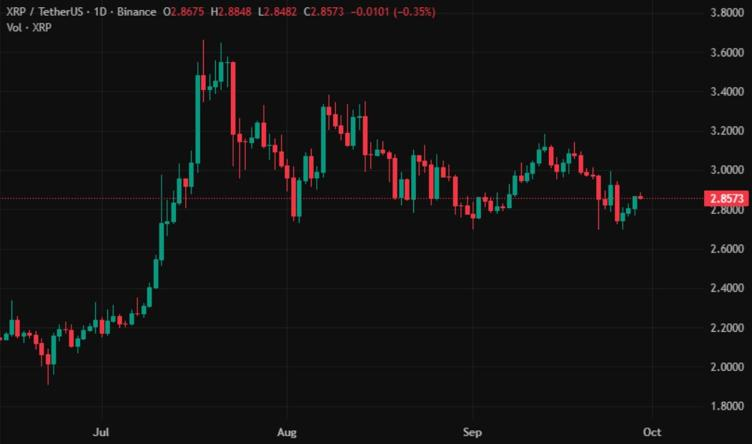Fedi, the Bitcoin firm constructed on the open supply Fedimint protocol (a privacy-focused Bitcoin fee technique utilizing Chaumian e-cash), is rising from a interval of quiet improvement and asserting new breakthrough options. This new characteristic inside the Fedi app, scheduled to launch right this moment, goals to make it simple, personal, and safe to create multi-signature e-cash mints for communities world wide in just some clicks, according to Cypherpunk ideas of decentralization and person sovereignty.
Constructed into the more and more well-liked Android and iOS apps, this new launch permits customers to simply create new Fedimint federations with the assistance of G-bot, a pleasant chatbot interface. Mint founders should pay a primary service payment, add primary info to their mint in minutes, and wait a number of hours.
Subsequent, G-bot finds trusted nameless guardians who assist customers kind mint federations. This course of decentralizes the administration of the Mint’s Bitcoin reserves wanted to function the digital money mint. It additionally helps forestall collusion, as mint operators are nameless to one another and should reveal themselves publicly to seek out different colluding keyholders.
This Fedimint protocol is basically constructed on the inspiration of Bitcoin and the cypherpunk motion: privateness. “The primary line of the cypherpunk manifesto is that an open society within the digital age requires privateness. Privateness is just not a very good factor. It’s not a comfort. It’s a necessity,” Fedi CEO Obi Nwosu advised Bitcoin Journal in an unique interview. “Bitcoin with out privateness is our worst nightmare. That is the coin of 1984, the panoptic coin,” he mentioned, including a warning a few future the world could be clever to keep away from.
Based in 2022, Fedi has been quietly working to ship the promise of personal digital money to the world, constructing on some of the promising applied sciences designed for that function: David Chaum’s 1982 Chaumian e-cash. This type of digital cash was included into almost each copy of Home windows 1995 and proved its scalability and effectivity, however sarcastically it failed because of its centralization, as Chaum and Gates reportedly had been unable to succeed in a ultimate settlement on the deal.
Three a long time later, the Bitcoin group has taken on the problem of leveraging the brand new potentialities unlocked by the Bitcoin community to carry personal digital money to the world. This might resolve the basic trade-off of Chomian e-cash: the necessity to belief a single counterparty mint to subject e-cash banknotes and redeem them for the underlying foreign money.

What’s fascinating is that Bitcoin was designed as an answer to the basic tradeoffs of digital money. Digital money depends on trusted servers to authorize correctly funded transactions, however as a result of the system is basically constructed on encryption somewhat than id, authorization can happen with out realizing the person’s private info. Nonetheless, it requires dependable servers and will theoretically subject digital money notes in extra of its reserves, a type of the “double spending downside” that Satoshi Nakamoto sought to handle in his Bitcoin White Paper.
Because the historical past of digital money earlier than Bitcoin exhibits, centrally managed digital money mints are prone to harassment by hostile governments. Bitcoin decentralized the mint by decentralizing the accounting processes carried out by the mint with the invention of the Bitcoin node, which solved the “double spending downside” as a result of anybody working a node has a replica of all Bitcoin transactions and might independently confirm the accounting integrity of the system.
The draw back to Bitcoin’s strategy is that it leaves a public file of each transaction, which isn’t superb for privateness. It additionally has a tough theoretical restrict on the variety of transactions that may be processed per second, and isn’t very scalable. There are two limitations that digital money techniques should not have.
Nwosu has in depth skilled expertise in the case of the downsides of centralized cryptocurrency platforms. He was the founder and CEO of Coinfloor, a centralized cryptocurrency trade based in 2014. In line with CoinDesk in 2014, the trade was “the primary ‘publicly auditable’ Bitcoin trade” via an revolutionary audit course of referred to as proof of reserves. Reflecting on his personal expertise with the difficulty, Nwosu mentioned, “Being solvent is essential to me, but it surely’s additionally essential to have the ability to show it cryptographically if potential.” That have, and his considerations a few future with out personal digital money, are the apparent motivations for why he co-founded Fedi.
Nevertheless, making a scalable, decentralized, personal digital money is just not simple, each technically and politically. To unravel this basic downside in finance and pc science, many within the Bitcoin group have been searching for methods to mix the benefits of Bitcoin and Chaumian digital money to resolve or a minimum of alleviate the shortcomings of each techniques. Crucial innovation of the Fedimint protocol on this space is the event of a federated digital money mint that leverages Bitcoin’s native good contract capabilities, notably the safety of multi-signature transactions.
Bitcoin’s multi-signature scripts allow one thing new within the monetary world: transactions that may solely be executed if a number of events conform to signal. Banks could share accounts between a number of events, however these are guidelines enforced by attorneys, who should observe native legal guidelines and finally give native governments the ultimate say. In distinction, Bitcoin takes full benefit of the worldwide proof-of-work community to guard multi-signature integrity, making these contracts pretty much as good as gold and unlocking the potential of a brand new form of federated monetary establishment. The Liquid Community and Bitcoin’s Lightning Community solely exist because of this multi-signature know-how.

Fedimint takes multi-signature to the subsequent degree, shielding its members from one another via G-Bot and defending its mint customers from parental collusion, whereas including redundancy to the administration of the mint’s Bitcoin reserves and making hacking harder. Fedymint additionally protects guardians from unintentional key loss, and guardian thresholds permit the federation to revive stability if a secret’s misplaced or compromised, for instance if three out of 4 signers lose or have their keys compromised. Nwosu mentioned, “The larger threat is just not collusion, however customers forgetting their passwords, and federation reduces that threat as a result of the system continues even when one guardian fails.”
Finally, Nwosu predicts, there will likely be “tens of hundreds, if not a whole lot of hundreds, of federations, every utilizing it with a distinct set of customers.” These mints join to one another utilizing the Bitcoin commonplace and numerous fee rails comparable to on-chain Bitcoin and the Lightning Community, “offering cryptographic privateness inside every federation. Even when sending between federations over Lightning, privateness stays excessive as a result of customers can trade inside the pool. There isn’t any single level of belief or single level of failure.”
One of many widespread criticisms of digital money techniques, even after Bitcoin, considerations self-custody. Critics have argued that digital money, even in federated networks, is a managed and dependable system of cash, and Nwosu had notably sturdy insights on this topic. “If in case you have self-control and no privateness, you do not have self-sovereignty, as a result of somebody is aware of precisely what you are doing and might confiscate your cash at any time.” Digital money leaves no footprint on the chain, making it basically extra personal than any blockchain.
The submit From Stealth to Scale: Fedi Unveils Multisig Guardian of Federated Bitcoin E-Money Mints was first printed in Bitcoin Journal and was written by Juan Galt.










